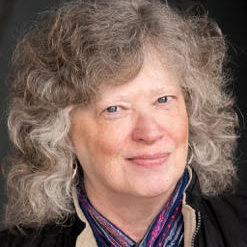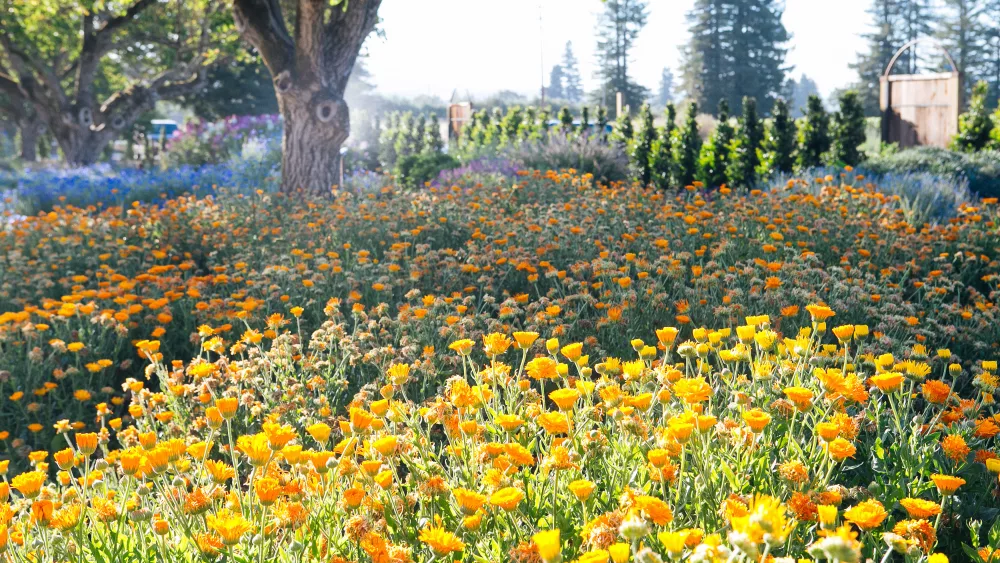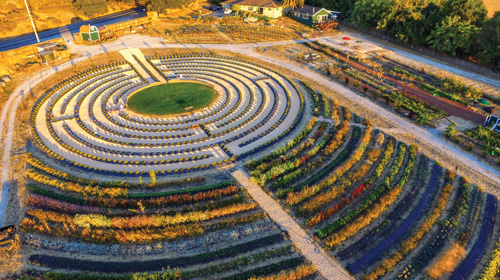
When King Tutankhamen’s ancient tomb was opened in Egypt in 1922, explorers said it contained traces of lavender, the aroma still detectable. Legend has it that Cleopatra used the fragrance of lavender to seduce Julius Caesar and Mark Antony. More than 400 years ago, Queen Elizabeth I of England insisted on a vase of fresh lavender on her table every day, and she drank cup after cup of lavender-infused tea.
Lavender has been enchanting royalty and regular folks around the globe for millennia. A member of the mint family and a relative of rosemary, it’s believed to have originated in the Mediterranean, Middle East, and India. The ancient Greeks revered it as a holy herb, and Romans used it to scent their homes, baths, and clothes. It’s also versatile, prized for its medicinal properties and as a seasoning for cooking.
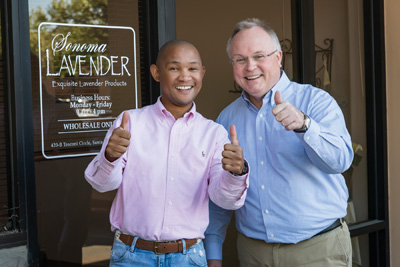
“Lavender is one of those fragrances that nearly everyone loves,” says Scott Maddock, owner and president of Sonoma Lavender in Santa Rosa. “In the three years I’ve been running this business, I’ve met only a handful of people who don’t like the fragrance. It’s one of the most popular ever, so it’s not surprising you see so many products scented with lavender.”
An evergreen perennial of many varieties, lavender is grown around the world in various locations where it can thrive, but the quality of the flower buds vary greatly, says Maddock. “Many grades of lavender, such as what’s cultivated in China and some other countries, are not of high quality and the fragrance is mediocre.”
Sonoma County is home to several lavender growers who sell an assortment of scented products they create in their own drying barns and facilities. The most popular varieties of the plant grown locally are lavandula angustifolia (commonly called English lavender) lavandula pedunculata (French lavender), lavandula x intermedia grosso (a hybrid), and lavandula stoechas (Spanish lavender). Each variety has its own special properties and characteristics.
Maintaining high quality
Sonoma Lavender’s previous owners, Gary and Rebecca Rosenberg, had been growing lavender on several acres in Kenwood for more than 20 years and crafting products onsite. Then, in October 2017, the lavender fields and several structures, including the Rosenbergs’ home and barn, were destroyed when a wildfire tore through the property. Maddock, a former chief executive officer for Revlon, and his business partner, Siza Nyuliwe, had purchased the company just three months earlier from the retiring Rosenbergs, with the intention of using their lavender supply in Kenwood to continue making products. The disaster upended their plans.
“We obviously had to quickly change course, while still trying to maintain the quality of the lavender we would use, but that turned out to be a smooth transition and went well,” he says. “Currently, all of our lavender is imported from Southern France, where the quality is exceptional. A lot of lavender enthusiasts really appreciate that there are different levels of quality in lavender. We source only premium lavender. It’s unlikely we would become farmers here ourselves, but we are open to using lavender supplies in the area to get back to our Sonoma heritage.”
Sonoma Lavender’s customer service manager, Shelli Colmenero, says it partners with growers in France who can supply the company with many tons of lavender several times a year. The products are mostly handcrafted by some of its 25 employees, and the manufacturing and distribution take place in a facility on Tesconi Circle. Lavender products are hand-finished in Santa Rosa, with the exception of the robes and the stuffed animals collection.
“Our big business is wholesale to gift shops and spas across the United States,” says Maddock.
“The focus is on the luxury market, and our products are aimed at relaxation and body care, as well as many items for the home. In a normal year, we enjoy revenues in the millions.”
During the coronavirus lockdowns of hotels, spas, and non-essential retail businesses nationwide, Sonoma Lavender turned to its direct-to-consumer market online. “That part of our business had been tiny, because most of our support comes from wholesale,” says Maddock, “but during the shutdown we were able to fulfill many orders out of our facility.”
“We started selling directly to the public online in 2019,” adds Colmenero. “We also opened up an opportunity for our retailers to be brand ambassadors, so they can take orders from customers and we can drop-ship for them during the coronavirus challenges.”
Partnering to make product
Lynn Rossman, proprietor of Lynn’s Lavender near Occidental, is a psychologist by training, having spent most of her career running her own consulting firm in Silicon Valley. But she would make frequent visits to Bodega Bay, and longed to find her own place nearby to create a lavender farm. Her wish was granted in 2002, when she bought 10 acres on Harrison Grade Road, three planted with winegrapes.
“I bought the parcel without a plan and planted lavender.” She laughs. “It was pretty, but I thought, now what should I do with it?” She turned her focus to cultivating lavender products from her harvest, which now fills two acres on the site. She operates two retail shops there—one is a garden and gift shop, and the other a dining and décor shop.
Rossman’s primary business model is wholesale to retail, she says. “For retail, you don’t want your lavender products to lose potency or go rancid on store shelves. If you’re only selling products to friends and family who will use them right away, or at farmers markets or craft fairs, that’s fine. But some products, particularly lotions, can have a short shelf life. They need to be formulated and produced in a safe lab environment. I found a lab in California to work with, and we developed a product line that’s made there. Being chemists, they know what they’re doing. The lab can ensure product freshness with no contamination.”
The farm is open for visitors, with no appointment necessary, on Saturday, and Sunday. “For the most part, we encourage our visitors to enjoy the property, but last year we had several groups who thought it was important to lay down on the lavender plants to take selfies,” she says with a sigh. Though it may be tempting, it’s not healthy for the shrubs.
Lavender and honey
Rick and JoAnn Wallenstein used to grow vegetables on their family farm west of downtown Petaluma, and they shared the bounty with relatives and friends. “But we would get discouraged because the gophers and the deer were eating too well,” says Rick. “So we started planting lavender in 2000, because JoAnn had seen a patch of lavender on another property and wondered if we could make it work on ours. We got some books on growing lavender and decided to try it.”
They started with just a few hundred plants and then gradually grew more over the years. “Eventually we got up over 5,000 plants,” says Wallenstein. “We kept adding more because we wanted to see what the market would bear.” The farm is also in the business of honey, with numerous beehives on the property that produce lavender blossom honey. Early on, the couple developed a website, which helped them to reach a large online audience for their lavender and honey products. About 10 years ago they opened the farm to the public for sales and tours during the blooming season.
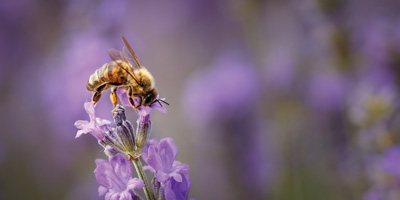
Today, the couple’s Lavender Bee Farm includes 2.5 acres planted to lavender. They can generally handle the cultivation and upkeep themselves, says Wallenstein, but recruit help when pruning, harvesting, drying, and bouquet-making tasks are required. “We have several workers we’ve been using for quite a while, and we also get college students who are taking ag courses and [looking for] internships,” he says.
During a typical growing season, the initial cutting usually takes place in mid to late June, then a second pruning happens in late September or October. Once planted in the ground, Wallenstein says, most lavender varieties are fairly easy to maintain. “Some of our plants, depending on the type, are still productive after 15 years, but the normal lifespan is between six to eight years. When they get old they get woody, that’s just the nature of the plant.”
Last year, he pulled out a large number of older shrubs that had run their course and added many new starts. “So we should have a good crop this year and then next year will be even better, and the year after that even better. Lavender generally takes three seasons to fully mature.”
A labyrinth and a still
One of the newest lavender growers in the region is Susan Kegley, owner of Bees N Blooms in Santa Rosa. Kegley has a Ph.D. in chemistry and ran a pesticides consulting business before opening the 11-acre certified organic farm on Petaluma Hill Road four years ago. Her first lavender harvest on the farm was last summer, when the three-year-old plants produced their first mature crop of buds. “We had enough lavender to make 5,000 bundles in August,” she says.
Unique to Kegley’s property is a half-acre lavender labyrinth, each circle of the maze a different variety of the shrub, so they bloom at different times in summer. Visitors are encouraged to walk the labyrinth, and members of her “Friends of the Labyrinth” group are offered a special day to walk it during a quiet time, along with other perks. Visitors are provided a map of the farm for a self-guided tour, and several specialized tours can be scheduled, such as learning about pollinators and how to plant to attract pollinators.
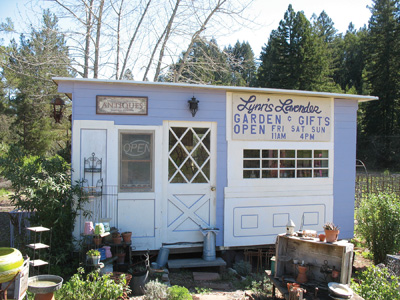
In January and February, Kegley spent her days making lavender oil using a still. “I ran a 25-gallon essential oil steam distiller that works on propane. It’s a perfect fit for my chemistry background. The buds for the oil come primarily from our one acre of the Grosso variety, which has the highest yield of oil. So that’s our oil production field, because Grosso is generally too medicinal for culinary use.”
Kegley’s lavender drying barn is a 1,000-square-foot leased space in the Mark West Springs area, but all other product work is handled at the farm site.
Bees N Blooms officially became an Amazon seller several months ago. “When the pandemic shut down our events business, it happened to be good timing that our online products business was already up and running well,” she says. “To make a business like this work, you need to consider the marketing end of things, and that’s another learning curve for me. The farm products themselves bring in income, but the economic driver for us is events. Being able to pivot to deal with the shutdown was critical to staying afloat.”
Awaiting visitors
As of late May, Wallenstein was hopeful he could open his Petaluma farm soon for summer visitors. “I’ve been getting requests already from people wondering when we can schedule their visit or a tour. Many of our guests come from the Bay Area and want to see lots of lavender in bloom, but more and more they also just want to see what farm life is like.”


